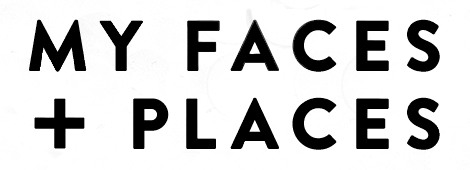Mad about Madeira
Madeira is a wondrous volcanic island rising from the depth of the wild Atlantic Ocean giving rise to a dramatic landscape of craggy basalt coastline punctuated by lava islets, rugged sea stacks and coves of black sand. With only an area of 57km long and 22km wide, it may be small in size but huge in attractions. Lush tracts of laurel and pine forests clad the undulating topography of misty mountains and steep ravines sweeping into valleys and petering out onto vertiginous cliffs. Due to its mild sub-tropical climate and fertile volcanic soil, the island is ablaze with an amazing variety of flora including the weird and wonderful Swan Neck agave with its giant floral stem that rises up to 150cm arching like the neck of a swan. Agriculture crops such as bananas and sugar canes are widely grown on hill terraces along with exotic fruits like custard apples, guavas and passion fruits. The most peculiar fruit grown here is the “banana pineapple” that looks like a long green pine cone which neither looks like a banana nor pineapple or tastes like either of them.
This travel article is about my journey around the sub-tropical island of Madeira.

Madeira’s picturesque landscape of sweeping valleys ringed by mountains are typical of the island’s town settlements

Dramatic landscape of rugged coastline with towering cliffs and rocky islets washed by the Atlantic Ocean

The weird and wonderful giant Swan Neck plant
Madeira: Cámara de Lobos
A short drive west of Funchal, the capital of Madeira, lies the town of Cámara de Lobos or ‘Chambers of Sea Wolves’ in Portuguese. It was named after the large colony of monk seals, which they called sea wolves that were found here when the early pioneers first landed in Madeira in the 15th century. Their voracious appetite for fish had led to conflicts with fishermen who contributed to the demise of the colony. Today the seals have dwindled to a small number found only on Desertas Islands, one of the uninhabited islands in the archipelago of Madeira and are listed as an endangered species. Colourful fishing boats are berthed on the shore in a sheltered bay as the fishing season is closed for the winter due to rough sea. Off duty fishermen gather by the seafront are having their morning coffee while engaging in very lively discussions over topics of the day. Winston Churchill was known to make frequent visits to this scenic town to indulge in his hobby of painting.

Colourful fishing boats at Cámara de Lobos

The pretty seafront of Camára de Lobos against a backdrop of terraced banana plantations

Camára de Lobos
Madeira: Cabo Girao And Beyond
Just up the mountainous road from Cámara de Lobos, we reach Cabo Girao, the highest cliff in Europe at 580m above sea level. A glass-floor skywalk attached to the side of the cliff hangs high over the ocean for visitors to have the thrill of looking down the sheer drop of the cliff. Not for those who have fear of heights! The view from the skywalk is spectacular with a panoramic view of the surrounding seascapes dramatized by towering cliffs plunging into the azure ocean below. We head inland across Paul da Serra, a central plateau 1500m above sea level. The wild beauty of the laurel and cedar juniper forests heavily cloaked in mist is hauntingly enchanting. We reach Porto Moniz, northwest of the island, as strong wind howl while tempestuous waves crash against the harbour and recede in swirling foam into the ocean. This town is famous for its natural swimming pools among the volcanic rocks by the sea, which are popular with tourists in the summer. En route to Sao Vicente, we stop at Bride’s Veil, the highest waterfall in Madeira. The stunning waterfall cascades down a steep cliff face into the sea like the flowing veil of a bride, hence its name. Sao Vicente is a charming little town surrounded by mountains dominated by a church dedicated to St Vincent. The tranquillity at the church plaza is shattered by a group of wandering Ecuadorian musicians playing pan flute and guitar music from the Andes. I enquire about the origin of their rather lively music and they inform me that they are from Ecuador but have settled in Madeira. They spend their time travelling round the island to tourist attractions playing Andean music and selling them on CDs.

The panoramic view from Cabo Girao highest cliff in Europe at 580m above sea level

The magnificent vista from Cabo Girao

Bride’s Veil highest waterfall in Madeira
Madeira: Pico do Arieiro and Ponta de Sao Lourencao
A visit to Madeira is not complete without an adventurous jaunt on the eastern region of the island. Picturesque valleys ringed by mountains with plunging gorges define the topography here. Ancient irrigation canals called levadas, which were first built by farmers in the 16th century, criss-cross across the land over 2500km providing water in agriculture and are still in use today. Scenic walks along the levadas are popular with hikers in these parts of the island. Banana plantations and orchards peppered the hillsides in neat terraces. We literally drive in the cloud through extremely foggy precipitous road as the altitude increases to 1818m to Pico do Arieiro. At the summit we are greeted with blue sky and sunshine albeit the wind chill factor steal the warmth away. There are viewing platforms to admire the breath-taking view of the mountains and valleys that sprawl across the landscape in peaks and spurs set in stone millions of years ago when the island was formed. It is humbling to witness such majestic beauty of Mother Nature.
We proceed northwards to Santana famous for its A-frame houses with straw roofs once the homes of local farmers in the past. The few surviving ones today are preserved as tourist attraction and converted to souvenir shops. Our eastern adventure ends at the easternmost part of Madeira on an isthmus at Ponta de Sao Lourencao. The vista here is jaw-droppingly awesome from the cliff top plummeting down the cliff face from a dizzy height into the deep blue sea scattered with rocky islets and sea stacks. Madeira may be small but it is perfectly formed.
The Laurel Type Forests of Madeira is listed as a UNESCO World Heritage Site
Visit Madeira in a click: www.visitmadeira.pt
With grateful thanks to Madeira Promotion Bureau especially to Marta Henriques for arranging our tours on the island. TAP Portugal airline flies to Madeira daily via Lisbon.

The spectacular view of Pico do Arieiro at an altitude of 1818m above sea level

Historic A-frame houses in Santana, formerly homes of farmers in the past

The picturesque isthmus at Ponta de Sao Lourencao the easternmost part of Madeira
Follow my blog with Bloglovin
All rights reserved © 2015-2016 MyFacesAndPlaces.co.uk



